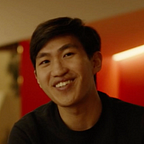Tracking Your Distraction to Understand Your Inner Conflict
This post is part of a series where we’ll explore how technology can change our perspective by writing and designing novel products every week this year.
8/50
—
I get distracted a lot throughout the day. Though my commute to work is only 15 minutes, I don’t think I’ve ever succeeded in keeping one line of thought the entire time.
It may be a millennial malady, but the death of attention is pervasive. Today we think about attention as a currency and as a battlefield to be fought over by corporations.
That being said, although it’s true that the torrent of external distractions chips away at our attention span, most of the time our ability to stay in the present is not stolen by them, but rather by our internal conflict.
Calm
Calm is an app designed to effortlessly track moments when distractions occur in order to encourage mindfulness and reveal mental turmoil with the long-term goal of facilitating inner peace.
Non-UI
It’s undeniable the irony of using an app to help reduce app usage. Both Apple and Google have released apps to automatically track our screen time in order to help us be more mindful of our phone usage. Calm, however, believes that mindfulness requires practice. Although having our phone automatically track our usage is great for collecting metadata, it doesn’t train our mind to be in the moment — since it reports after the fact. Moreover, since it’s impossible for a software to know what we’re thinking, it can’t account for all the little distractions that happen in between and inside our head.
By having ourselves participate in tracking when our mind wanders, however, we train ourselves to be more cognizant of when it occurs.
That being said, opening our phone and opening an app takes us out of the present; it is therefore key to make tracking as invisible as possible. The moment Calm is opened, it automatically records the fact that our mind has wandered. That way, as soon as the app loads, we can immediately kill it. In doing so, we won’t be ironically sucked away into our phone by our distraction.
Furthermore, since our brain has memory, we don’t even need to record a wandering moment the instant it occurs. We can record distractions in batches by tapping on the screen to increase the number of instances to be tracked, rather than instantly killing the app and only recording one. That way, if we are talking with someone, we can record any distractions that occur mid-conversation after it has finished, rather than interrupt it.
Retrospective
More than just tracking the times that our mind has wandered, we also need to be aware of why we were distracted. This helps us be mindful of our distraction, rather than just accepting the fact that we were distracted.
At a later point when we have space, we can purposely open Calm to annotate the moments that we have recorded. In this situation, when we launch the app, we can dismiss the tracking page and go directly into the annotation page.
There, each distracted moment we have recorded is presented in a card with metadata to help us remember why we were distracted. By presenting the time, location, what app was running, and so forth, we can recall the situation and the things that distracted us. These annotations will then be shown on a timeline so that we can see when we are distracted throughout the day.
By being aware of what we are distracted by we can more quickly recognize when our mind drifts.
Self-alignment
Over time, by continually tracking and annotating our distractions, Calm can reveal what’s been heavily on our mind. To help this process, Calm surfaces previous distractions when annotating new ones based on the similarity of their context.
Then, by having distractions be tagged in a consistent way, Calm can automatically tabulate what we’ve been distracted by. By ranking the frequency of distractions and distracting contexts, Calm can surface our inner turmoil as well as the places that are detrimental to our mindfulness. In surfacing this information, we can plan steps to help free our mind.
If you know you’re continually distracted by someone, something or somewhere, whether positively or negatively, we can take actions to help us resolve whatever it is that is bringing us back to that topic.
Future
We’ve already mentioned that taking out our phone is distracting. In the future, we can explore how the app can come with a watch app or dedicated device, that can allow us to track our distractions without opening and being distracted by our phone.
We can also consider how the app can be proactive in reminding us to be mindful. Just as gel bracelets can be a tool to continually remind ourselves of a cause, a simple buzz can remind us to be mindful — though of course, we’d need to properly balance its value since it can be distracting.
TL;DR
Though distractions are a fact of life, it is a symptom of things neglected or unfulfilled. By tracking when we are distracted and the topic we are distracted by, we can start to recognize what causes our mind to drift. By knowing what is weighing us down, we can start to resolve this inner turmoil. In doing so, we slowly free our mind from distractions and revitalize our mental freedom.
Happiness is when what you think, what you say, and what you do are in harmony. — Gandhi
—
- Get the Sketch File!
- See the last installment: Environmentally Friendly Meal Kit Service Through Grocery Store Partnership
Don’t forget to subscribe to be notified when the next installment comes out!
—
Photo by Ashley Batz on Unsplash
